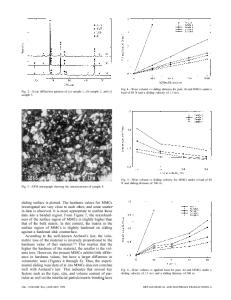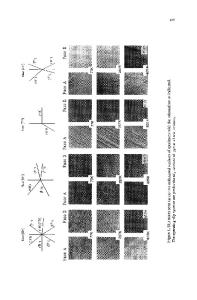Compression behavior of TiB 2 -particulate-reinforced composites of Al 22 Fe 3 Ti 8
- PDF / 1,310,240 Bytes
- 9 Pages / 576 x 792 pts Page_size
- 101 Downloads / 337 Views
J. D. Whittenberger NASA Lewis Research Center, Cleveland, Ohio 44135 (Received 9 August 1990; accepted 14 November 1990) The compression behavior of both the monolithic Ll 2 compound Al22Fe3Ti8 and discontinuous composites obtained by incorporating —1 fim TiB2 particles was studied for various volume percent reinforcements as a function of temperature and at high temperatures as a function of strain rate. In this study, by varying the Fe and Ti contents, the nature and volume fraction of the minor phases coexisting with the dominant Ll 2 phase were changed and were examined with and without TiB2 reinforcement. At high strain rates (1(T4 s"1), the TiB2 reinforcements significantly enhance ambient and warm-temperature strength, although a crossover is observed at —1000 K, above which the monolithic material is stronger than the composite. At slow strain rates (10~7 s"1), representative of creep conditions, however, the TiB2-containing composites retain their superiority at least up to 1200 K. Power law fits of compressive flow stress at 1% strain versus strain rate yielded a stress exponent of —3.0 with an activation energy of 310 kJ/mol for the monolithic material. For the particulate composites (20 vol. % TiB2), the corresponding values were —5.0 and 465 kJ/mol, suggesting a change in the dominant deformation mechanism.
I. INTRODUCTION
There is an increasing need for lightweight highperformance materials in today's aerospace arena. Superior engine designs, for example, place exacting demands on the high-temperature properties of candidate materials. Property requirements for engine materials include elevated temperature strength, creep resistance, damage tolerance, oxidation resistance, and low density. Ordered intermetallics exhibit many of these properties and are potential alternatives to superalloys. Aluminides of nickel, iron, and titanium have been the focus of research interest. The aluminum-titanium intermetallic, Al3Ti, has recently gained attention because of its low density (3.37 g/cm3) and good oxidation resistance.1 Although aluminum-rich intermetallics like Al3Ti are desirable from the point of view of density and good oxidation resistance, these compounds in general have complex crystal structures and typically are brittle. The DO22 Al3Ti, for example, is brittle at ambient temperatures even in compression, and deforms primarily by microtwinning.2 Several investigators have attempted to decrease this brittleness, one via minor alloying additions which retains the DO22 structure3 and the other by major alloying additions (8-10 at.%) which transforms the DO22 structure to a more symmetrical Ll 2 structure.4"9 Although appreciable room-temperature compressive ductility7'8 and limited bend ductility9 have been generated 530 http://journals.cambridge.org
to date by adopting such approaches, the tensile ductility at ambient temperatures remains a major issue. Although ambient ductility is important in such materials, of equal, if not more importance, is their ability to retain strength at elevated temp
Data Loading...











